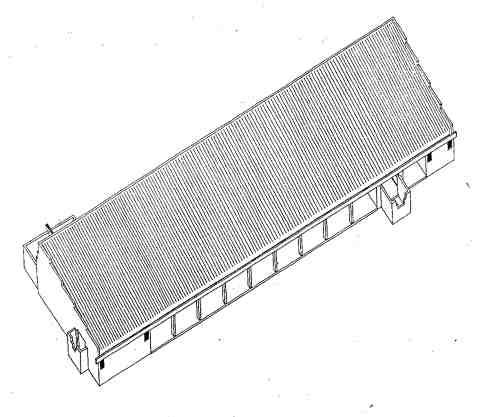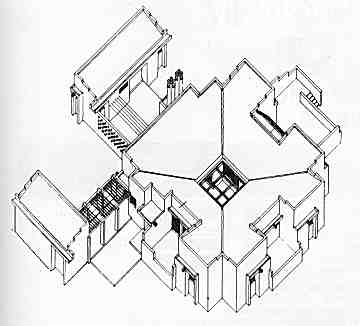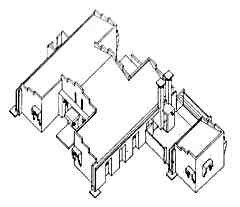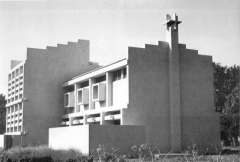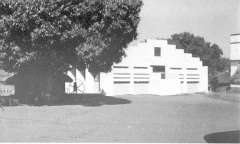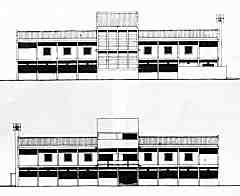NONO LIVRO
SOME BARGAINS IN A TROPICAL BUSH STYLE
For quite some time I had done small bits of work for the Swiss Mission, the oldest Christian church mission in southern Mozambique. It was mostly advising on repairs and patching up leaking roofs, sometimes putting a painting job out to tender, sometimes improving an old and worn mission building to make it more useful and comfortable.
I had also done a dirt cheap communal kitchen and eating porch at Ricatia, the Mission Station that Henri Junod, the famous missionary and anthropologist had founded towards the end of the 19th century before the Portuguese had fought their last native war and had begun to settle in the interior.
|
I had worked with Muchlanga at Riciata Station, building the communal kitchen and eating porch out of blocks, sticks and grass, and was convinced that they could build the school better and for less money than any contractor. Muchlanga could hardly read and write but he had some understanding of drawings and dimensions even if I sometimes had to draw special sections with the rows of blocks drawn in and numbered so that he could count them and stop at the sills and door heads and at the gutter and gable steps. He built impeccably - he had learnt to do so from a Swiss missionary who was a builder. I told the missionaries that Muchlanga could do it, that the time had come for them to let go and they agreed to try it out. The engineer's plan was thrown out and I designed a new one. Getting the approval from the many Government Departments for the little school plan was an adventure in slow motion. It was finally achieved by the unexpected power of a Swiss wristwatch. I was having a Luddite period when we started to build so no machines came near the school. |
Instead all the work was done by hand to give an opportunity for as many people as possible to have work near their families and homes and to have a hand in the building of their own children's school. We cleared the fields of the stones with which we cast the foundations. In the dry season we brought sand up from the river bed. We made the wall blocks from pit and river sand and cement. We cut down some trees for the windows and doors and they were made at another nearby mission which had a carpentry workshop of sorts. I spent much time on the site marking it out, checking it and building the roof trusses. The school took some time to build but we finished it well and painted it a very deep ochre. It cost 600$00 a square metre including the light fittings, the furniture, a huge underground rain water cistern and the boat to ferry the children back and forth from Macuvulane on the other side of the river. It came out at that price thanks to George Andrié whom I would swear I have occasionally glimpsed with a halo around his head. |
|
At Chicumbane Mission station on a rise overlooking the huge Limpopo River flood plain there is an hospital built in the thirties. Although this was one of the busiest hospitals in the interior of southern Mozambique, it was not quite legal. It had to pay a yearly licence as a commercial nursing home and got no help whatsoever from the Government The hospital was very overcrowded. Originally each patient was cared for by his own family in one of a number of small huts clustered round the main hospital. This system had to he discontinued for reasons of hygiene and efficiency and because of the changes in the society brought about by the intense migration of workers to the towns and to the mines in South Africa. To enlarge the hospital I proposed a series of pavilions with a covered connection linking them all to the existing hospital. There was an even more ambitious scheme where the same thing happened on the other side of the hospital. All that we could afford to build in the end was the first pavilion. It became the maternity section. |
We imported two solar water heater units, installed them and they worked vary well. A bright Swiss missionary in the old workshop tampered with the idea, made variations and improvements and the Mission workshop was soon making its own solar water heaters which we fitted to many of the buildings |
|
For many generations nurses had been trained at Chicumbane but when this was structured as a course and became recognised by the Government, a Hostel for the Student Nurses was required The little hostel for twenty four student nurses was built in a clearing quite close to the hospital. During construction, as the building took shape, it was always a joy and a surprise to walk towards the thick bush, go through it and then find oneself standing quite close to the building from one moment to the other, as if the building was an apparition, quite unreal; a figment of the imagination. |
| HOME PAGE | CONTENTS PAGE | PREVIOUS PAGE | NEXT PAGE |
